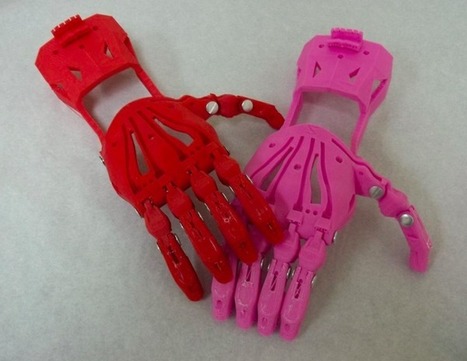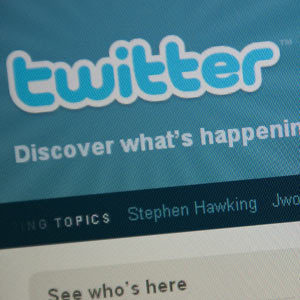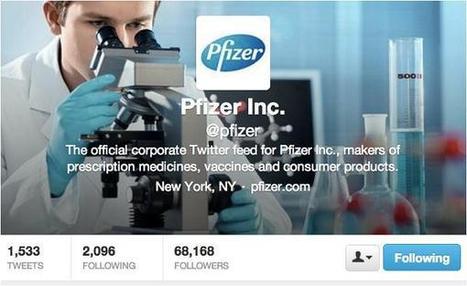 Your new post is loading...
 Your new post is loading...

|
Scooped by
nrip
|
Low anterior resection syndrome (LARS) is a common functional disorder that develops after patients with rectal cancer undergo anal preservation surgery. Common approaches to assess the symptoms of patients with LARS are often complex and time-consuming. Instant messaging/social media has great application potential in LARS follow-up, but has been underdeveloped. Objective: The aim of this study was to compare data between a novel instant messaging/social media follow-up system and a telephone interview in patients with LARS and to analyze the consistency of the instant messaging/social media platform. Methods: Patients with R0 resectable rectal cancer who accepted several defecation function visits via the instant messaging/social media platform and agreed to a telephone interview after the operation using the same questionnaire including subjective questions and LARS scores were included. Differences between the 2 methods were analyzed in pairs and the diagnostic consistency of instant messaging/social media was calculated based on telephone interview results. Conclusions The instant messaging/social media system provides a promising solution to accommodate the primary follow-up needs of patients with LARS by integrating complex functional follow-up tools into smartphone apps. Although it is currently not a substitute for manual follow-up, it has the potential of becoming a major LARS screening method. However, further research on response rate, information accuracy, and user acceptance is needed before an advanced system can be implemented

|
Scooped by
nrip
|
A chance connection over the internet has spawned multiple efforts to provide 3D printed hands at an extremely low cost.
Around the world, there are people who have lost all or part of their hand, or were born without one. There are also people and institutions with 3D printers. Pair the two, and you can print a custom mechanical hand for $20-150 — thousands less than the typical prosthetic.
e-NABLE, which functions through a website, Facebook page and Google+ page, stepped up to connect the two after site founder Jon Schull came across work by American prop maker Ivan Owen, who made a metal mechanical hand for South African carpenter Richard Van As. Van As had lost four of his fingers in a carpentry accident.
Owen was then contacted by a mother whose 5-year-old son needed a hand. He again made a metal hand for the boy. But then he turned to 3D printing. MakerBot gave both Owen and Van As a 3D printer.
The pair developed a 3D printed hand for the boy and then posted the design to Thingiverse, where anyone could download and print it. Van As and Owen’s efforts toward developing 3D printed hands live on via the Roboand project, which has created more than 200 hands and now branched into prosthetic fingers and arms. But Schull was interested in connecting people who needed hands with individual makers and institutions that had 3D printing skills, but potentially idle printers.
He started a Google+ page, and then a Facebook page and website. More than 300 makers make their services available to people who contact e-NABLE about a hand. Just a quick scroll through posts on the Facebook page reveals many, many people who have a use for a hand. “I see e-NABLE as a crowd-sourced pay-it-forward network for design, customization and fabrication of all sorts of assistive technologies,” Schull told Rochester Institute of Technology, where he is a researcher. “This is a scalable model that could go way beyond 3D printed prosthetic hands.”

|
Scooped by
nrip
|
A Facebook user’s timeline provides both a snapshot of who that user is and a historical record of the user’s activity on Facebook. My Facebook timeline is about me, and fittingly, I control it. It’s also one, single profile. Anyone I allow to view my timeline views my timeline—they don’t each create their own copies of it.
Intuitive, right? So why don’t medical records work that way? There is no unified, single patient record—every doctor I’ve ever visited has his or her own separate copy of my records. And in an age where we can conduct banking transactions on my smartphone, many patients still can’t access or contribute to the medical records their doctors keep for them.
My proposal? Medical records should follow Facebook’s lead.
“About” for Complete, Patient-Informed Medical History On Facebook: The “about” section is the one that most closely resembles the concept of a user profile. It includes a picture selected by the user and lists information such as gender; relationship status; age, political and religious views; interests and hobbies; favorite quotes, books and movies; and free-form biographical information added by the user.
“Privacy Settings” and “Permissions” for Controlled Sharing On Facebook: Privacy settings allow users to control who can see the information they post or that is posted about them. For example, in my general privacy settings I can choose to make my photos visible only to the people I’ve accepted as “friends.” However, if I post a photo I want the entire world to see, I can change the default setting for that photo to be visible publicly instead. “Status Updates” to Document Diagnoses and Treatments On Facebook: “Status updates” let Facebook users broadcast what’s going on with them at a given moment. (For example, my status update might say: “I just had a great idea for improving medical records.”) A user’s latest status update appears toward the top of the timeline; older statuses can be viewed by scrolling through the timeline.
“Photos” for the Online Delivery of Test Results On Facebook: Users can upload pictures they’ve taken. Photos are organized into albums that are visible on the user’s timeline. There’s also a special “photos” section where viewers of the timeline can go to see all of a user’s photo albums. “Tagging” to Involve Other Parties and Track Common Themes On Facebook: Users can “tag” other users to indicate their involvement with the content being posted. For example, when I post a picture of myself with a friend, I can “tag” the friend in that photo. This ties the photo to both our timelines instead of just mine. It also triggers a “notification” to the friend that she’s been tagged. She can remove the tag if she doesn’t wish for the photo to be tied to her timeline. “Notifications” for Test Result Alerts, Medication Alerts, or Preventive Care Reminders On Facebook: Users are alerted by red “notification” messages when another user writes them a message, posts a picture of them or otherwise interacts with their profile. These notifications are a way to make the user aware of interactions or information involving them. “Check-Ins” to Denote Office Visits On Facebook: Users can “check in” to places they’re currently visiting. For example, I could “check in” to the concert I’m at on a Saturday night. This would serve as both a status update and a record of my attendance of the concert. Photos can also be marked with places to record where they were taken.
“Friendships” to Track New Provider Relationships On Facebook: Users can create “friendships” with other users when one party electronically requests a friendship and the other party electronically accepts. These friendships are marked on the user’s timeline (“Jane Doe is now friends with John Smith”) along with the date the online friendship was created.
“Events” to Track and Remind for Upcoming Appointments On Facebook: Users can create online “events” to manage attendance and other details for in-person events. For example, I might create an event for the New Year’s party I plan to host, and I might invite my Facebook “friends” to that online event, where they could RSVP and receive reminders as the event date approaches.
a lot more at http://qz.com/161727/wed-all-be-better-off-with-our-health-records-on-facebook/#/h/37426,4/

|
Scooped by
nrip
|
Monitoring social media websites like Twitter could help health officials and providers identify in real time severe medical outbreaks, allowing them to more efficiently direct resources and curb the spread of disease, according to a San Diego State University studypublished last month in the Journal of Medical Internet Research,Medical News Today reports.
Study Details
For the study, lead researcher and San Diego State University geography professor Ming-Hsiang Tsou and his team used a program to monitor tweets that originated within a 17-mile radius of 11 cities. The program recorded details of tweets containing the words "flu" or "influenza," including:
- Origin;
- Username;
- Whether the tweet was an original or a retweet; and
- Any links to websites in the tweet.
Researchers then compared their findings with regional data based on CDC's definition of influenza-like illness. The program recorded data on 161,821 tweets that included the word "flu" and 6,174 tweets that included the word "influenza" between June 2012 and the beginning of December 2012.
According to the study, nine of the 11 cities exhibited a statistically significant correlation between an uptick in the number of tweets mentioning the keywords and regional outbreak reports. In five of the cities -- Denver, Fort Worth, Jacksonville, San Diego and Seattle -- the algorithm noted the outbreaks sooner than regional reports.
|

|
Scooped by
nrip
|
Although many people with serious diseases participate in online support communities, little research has investigated how participants elicit and provide social support on these sites.
This study by Yi-Chia Wang, Robert E Kraut, John M Levine Uses Computer-Aided Content Analysis to Examine the Dynamics of Online Social Support.
A high percentage of people with chronic or life-threatening diseases use online resources to obtain information about their condition and ways to cope with it. Although informational websites are the most popular, many people—especially cancer patients and survivors—participate in online health support communities.
A recent meta-analysis suggested that online support communities are effective in decreasing depression and increasing self-efficacy and quality of life. Although several clinical trials suggest that participation in Internet-based support communities improves emotional well-being, conclusions are ambiguous because most interventions have multiple components of which support group participation is only a part.
Moreover, research also shows that support interventions often do not provide the benefits they were designed to produce. Thus, much remains to be learned about when and why support is effective in online communities.
Conclusions of this study : Self-disclosure is effective in eliciting emotional support, whereas question asking is effective in eliciting informational support. Moreover, perceptions that people desire particular kinds of support influence the support they receive. Finally, the type of support people receive affects the likelihood of their staying in or leaving the group. These results demonstrate the utility of machine learning methods for investigating the dynamics of social support exchange in online support communities.

|
Scooped by
nrip
|
On Monday, FDA released draft policy guidance indicating that pharmaceutical drug manufacturers and distributors would not be held responsible for information posted on social media about their products by consumers or providers.
Background
According to Modern Healthcare, the pharmaceutical industry has been reluctant to use social media platforms because it lacked FDA guidance on how such platforms could be used without violating certain prohibited promotion.
For example, pharmaceutical firms were concerned about being held accountable for social media posts by clinicians or patients promoting off-label use of their products. In addition, drugmakers are required to disclose side effect information when promoting their products, but social media posts by third parties might not include such data.
Details of Draft Policy Guidance
In the draft policy guidance, FDA notes that such companies are generally not accountable for user-generated content that is "truly independent," meaning it was not produced or solicited by the companies.
The draft guidance also states that pharmaceutical companies are not responsible for content published on websites they financially support but do not control editorially.
In addition, such companies will not be held accountable for promotional materials found on third-party websites as long as the pharmaceutical firms did not direct the promotion's placement on the website and did not have any other control or influence over the site.
source: http://www.ihealthbeat.org/articles/2014/1/15/fda-unveils-draft-guidance-on-drugmakers-social-media-use

|
Scooped by
nrip
|
As 2013 draws to a close, Daniel Ghinn has put together a list of his top-ten favourite pharma social media 'firsts' of the year - new things that pharmaceutical companies have been doing in social media.
It's been a year packed with new ideas, channels, and lessons learned.
In pharma social media, this list is where the new ground is being taken in what is still a challenging environment for regulated pharmaceutical industry.
Here's what pharma did for the first time in 2013:
10. Cleaned up its Twitter name
9. Implemented Tumblr to support patients
8. Exceeded 7 million views on YouTube
7. Reached 90,000 likes on Facebook
6. Integrated social media with a prescription product website
5. Lost $160m in a social media crisis
4. Maximised congress activity with social media
3. Hosted disease-focused chats on Twitter
2. Trained doctors in social media
1. Activated Digital Opinion Leaders
To read in detail about each of the above, check out the original post at http://www.pharmaphorum.com/articles/pharma-gets-social-top-10-pharma-social-media-firsts-in-2013

|
Scooped by
nrip
|
These are the slides from my talk at the 4th Annual Putting Patients First Conference in Mumbai.
If god were to manifest the world using technology, he would first create something like social media. Conceptually provide technology with the ability to understand the thoughts of a population
SocMed leaves behind the old model of 1-to-1 communication – “talking to someone over the phone” Enables one-to-many communication (via blogs or microblogging) or many-to-many communication (discussion forums, social walls). Now anyone can setup an online community site/portal to represent a small or big offline community.
Further, anyone can setup an online site related to a treatment, a disease, a doctor, a drug , a concept or anything and see it grow into a popular site which in effect is simply the manifestation of a community which exists/ed but which no one ever knew of.
|



 Your new post is loading...
Your new post is loading...





















Common approaches to assess the symptoms of patients in long term treatments, currently in practice, include
These are time-consuming and often complex.
With the popularity of smartphones and mobile internet, remote network technology is changing traditional medical behavior